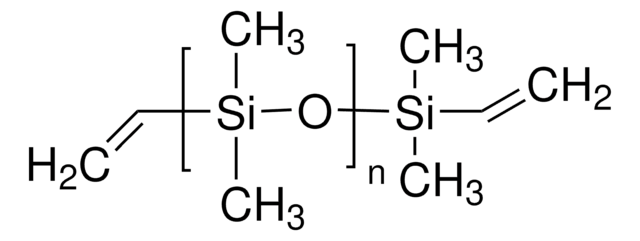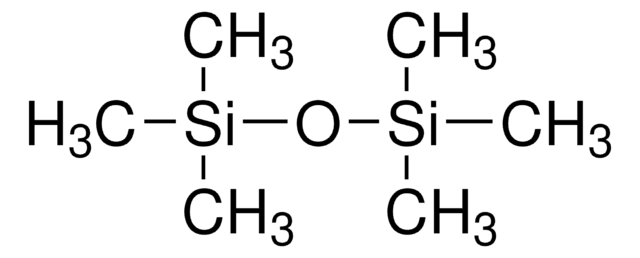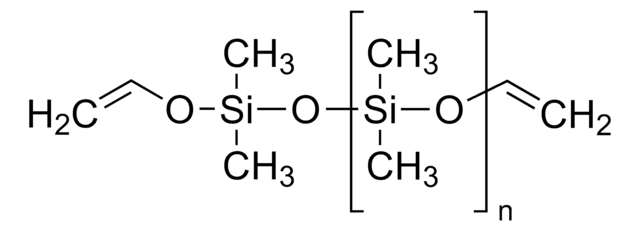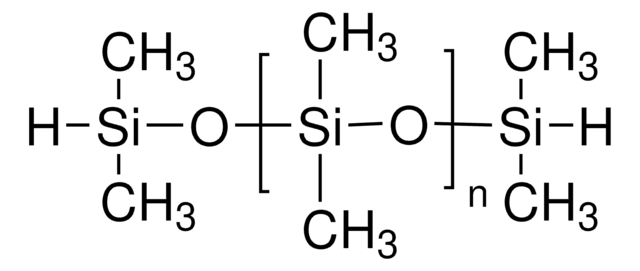Key Documents
469319
Poly(dimethylsiloxane)
viscosity 1.0 cSt (25 °C)
Synonim(y):
Octamethyltrisiloxane
About This Item
Polecane produkty
gęstość pary
>1 (vs air)
Poziom jakości
współczynnik refrakcji
n20/D 1.384 (lit.)
lepkość
1.0 cSt(25 °C)
tw
153 °C (lit.)
mp
−82 °C (lit.)
gęstość
0.82 g/mL at 25 °C (lit.)
ciąg SMILES
C[Si](C)(C)O[Si](C)(C)O[Si](C)(C)C
InChI
1S/C8H24O2Si3/c1-11(2,3)9-13(7,8)10-12(4,5)6/h1-8H3
Klucz InChI
CXQXSVUQTKDNFP-UHFFFAOYSA-N
Szukasz podobnych produktów? Odwiedź Przewodnik dotyczący porównywania produktów
Opis ogólny
Zastosowanie
Hasło ostrzegawcze
Warning
Zwroty wskazujące rodzaj zagrożenia
Zwroty wskazujące środki ostrożności
Klasyfikacja zagrożeń
Flam. Liq. 3
Kod klasy składowania
3 - Flammable liquids
Klasa zagrożenia wodnego (WGK)
WGK 3
Temperatura zapłonu (°F)
84.2 °F - (External MSDS)
Temperatura zapłonu (°C)
29 °C - (External MSDS)
Środki ochrony indywidualnej
Eyeshields, Faceshields, Gloves, type ABEK (EN14387) respirator filter
Wybierz jedną z najnowszych wersji:
Masz już ten produkt?
Dokumenty związane z niedawno zakupionymi produktami zostały zamieszczone w Bibliotece dokumentów.
Klienci oglądali również te produkty
Produkty
Dr. Tan and researcher introduce recent trends in Self-healing Soft Electronic Materials and Devices. The emergence of smart, functional SHPs will be highly beneficial to the advancement of the next-generation self-healing soft electronic devices. Autonomously self-healing devices could help to minimize the need for repair or replacement of electronics and machines, potentially reducing the cost of materials and reducing electronic waste.
Advances in the area of soft optoelectronics, with a focus on the development of organic optoelectronic devices on shape memory polymers (SMP) is discussed.
Nasz zespół naukowców ma doświadczenie we wszystkich obszarach badań, w tym w naukach przyrodniczych, materiałoznawstwie, syntezie chemicznej, chromatografii, analityce i wielu innych dziedzinach.
Skontaktuj się z zespołem ds. pomocy technicznej









